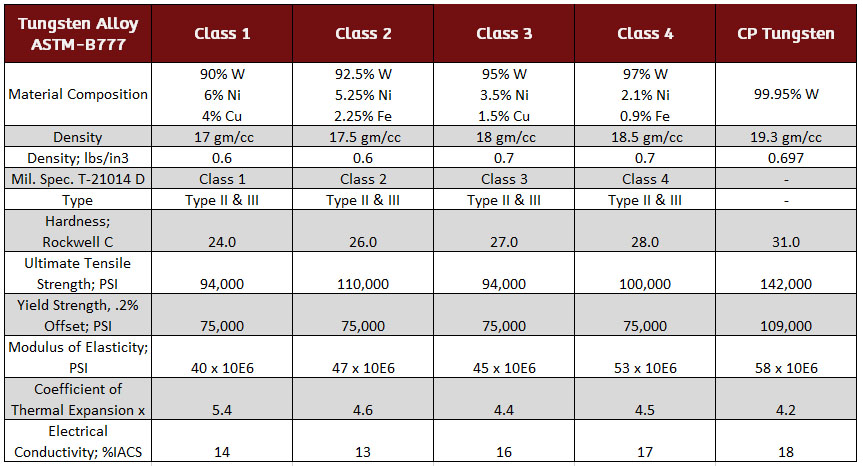Ultra-high density & high temperature / strength stability
- Very high density of 19.3 gm/cc
- Radiopaque to x-rays and other radiation
- High strength at extreme high temperatures (vacuum)
- Excellent corrosion resistance
- Mechanical properties of tungsten flat head screws
- Tungsten material datasheet
- Flat head screws features and benefits
Tungsten screws are known for their extreme high density; because of this unique attribute, they are often used for balancing rotating parts. Tungsten’s high mass also makes these fasteners radiopaque. This allows tungsten flat head screws to block radiation and show up well on x-rays – even better than lead. Another unique attribute of tungsten is its extrmely high melting point of 3420°C. The high temperature stability of tungsten screws make them ideal for some of the hottest vacuum furnace environments. Beyond their high mass and temperature stability, tungsten flat head screws are also very corrosion resistant.
Tungsten flat head screws are usually made from tungsten alloys per ASTM B777, and range from 90% to 97% pure tungsten, alloyed with nickel and copper or nickel and iron. Fasteners can also be made from Commercially Pure (CP) Tungsten.
Applications
- The aerospace industry depends on the tungsten flat head screws for their combination of high density and mechanical strength which allows them to reduce the physical size of components, offering greater control of weight distribution for propellers, inertial systems and fluid control systems to name a few.
- The heat treating / furnace industry uses tungsten fasteners in high temperature vacuum furnaces due to tungstens great high temperature strength & stability.
- The oil & gas industry uses tungsten flat head screws for radiation shielding properties to protect equipment used in oil and gas detection, as well as down hole logging for density and ability to withstand intense hydrostatic pressure
- Tungsten flat head screws also play a role in the medical community for their low magnetic properties as well as their radiopaque properties.
Resources: Tungsten Torque Specs
Tungsten Screw Types: Button Head Cap Screws, Flat Head Screws, Hex Head Cap Screws, Pan Head, Set Screws, Socket Head Cap Screws, Tamper Resistant Security Screws
Tungsten Flat Head Screw Features and Benefits
Tungsten flat head screws are characterized by having a head with a top flat surface (which can feature either a slotted, phillips or allen driver) and bottom that is cone shaped or countersunk. With this design, the head of the screw can align flush or below the surrounding surface having obvious benefits.
Tungsten Slotted vs. Phillips Driver
| Slotted Head Advantages | Phillips Head Advantages |
|
|
Countersink Angle
For most flat head screw designs the angle of countersink is usually 82° for UNC and UNF applications however other angles ranging from 60° -120° could be specified.
| Thread Type | Normal Flat Head Countersink Angle |
UNC / UNF | 82° |
| Aerospace | 100° |
| ISO Metric / Imperial | 90° |
Tungsten Chemistry & Specifications
Tungsten Specifications: ASTM B777, Mil Spec T-21014D


